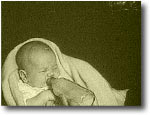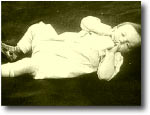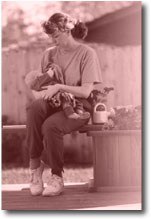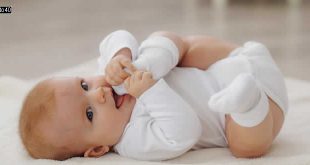 You can serve up a cold bottle to your child it will not harm your baby in any way. But if you are serving warm milk to your baby test the temperature of the milk or expressed breast milk by squirting a drop or two onto your wrist; if it feels comfortably warm, it’s right for your baby.
You can serve up a cold bottle to your child it will not harm your baby in any way. But if you are serving warm milk to your baby test the temperature of the milk or expressed breast milk by squirting a drop or two onto your wrist; if it feels comfortably warm, it’s right for your baby.
Few Tips to Remember
-
Mothers should be cautious if warming milk in microwave. It heats unevenly and can scald the baby’s mouth. Shake it well after heating and wait for thirty seconds, then shake it well and test it again before giving it to baby.
-
You can also warm a bottle by standing it in a couple inches of warm water in coffee maker for few minutes; or by setting it in any handy bowl, pan, mug or wide-mouth thermos of hot water; or by running hot tap water over it. Shake well occasionally to warm contents evenly.
-
Liquefy frozen breast milk in a bottle by letting it stand at room temperature until thawed, by running it under lukewarm water and gently turn the bottle. Do not shake it. Don’t reheat it in a microwave, as this will reduce anti-infective properties.
-
Keep a snack ready for yourself by the baby’s nighttime bottle to survive nighttime feedings.
Make Feeding Easier
-
 Make 2 A.M. feeding easier on parents of formula-fed (powder milk) by filling a thermos jug with warm water and keeping it in the baby’s room. Mix formula instantly instead of standing around the stove for fifteen minutes.
Make 2 A.M. feeding easier on parents of formula-fed (powder milk) by filling a thermos jug with warm water and keeping it in the baby’s room. Mix formula instantly instead of standing around the stove for fifteen minutes. -
Take a cold bottle (from the refrigerator) to your room or the baby’s when you go to bed. It will warm to room temperature by the time you need it.
-
Once a day, prepare all formula you’ll need for the next twenty- four hours, and store it in the refrigerator.
-
Always keep extra formula in the refrigerator to add to a too warm bottle.
-
If going out and carrying the bottles with you, you need to keep formula or breast milk cold for that use reusable plastic ice balls chilled in the freezer in the bottles (which you should do before hand).
Tips for An Even Flow from A Bottle
-
 To regulate the flow of the milk loosen the bottle collar, if the flow is too slow and tighten it if the flow is too fast.
To regulate the flow of the milk loosen the bottle collar, if the flow is too slow and tighten it if the flow is too fast. -
Enlarge nipple holes, if necessary, by putting toothpicks in them and boiling the nipple for three minutes, or by sticking a very hot needle into the rubber few times. If the hole is too big, toss the nipple and start using the new one.
-
To prevent lumps in powder milk put powder first and then add water. Cap the bottle or pinch the nipple shut and shake it vigorously.
-
You can also use bottle straws that inserts into traditional nipples, milk will flow more evenly no matter what position the bottle is in.
How to Manage Bottle Business
-
You can store bottles in the refrigerator in an empty cardboard six-pack holder to keep them together and safe from tipping. Or you can use sterilized glass pot to store milk.
-
If you are working and leaving your baby in day care, you should label the baby’s bottle by writing name on masking tape and tape it to a wide rubber band over the bottle. It’s easy to remove, and there’s no tape to clean off the bottle.
-
Sterilize the nipples, rings and baby bottle in boiling water, put a teaspoonful of vinegar in the water to prevent hard water deposits in the bowl or glass jar (if you are sterilizing the glass bottles in microwave oven).
-
 Use denture cleaner tablets to clean glass baby bottles. Soak the bottles in the solution for half an hour and then swish with a bottlebrush and rinse.
Use denture cleaner tablets to clean glass baby bottles. Soak the bottles in the solution for half an hour and then swish with a bottlebrush and rinse. -
Rinse out empty bottle as soon as possible or you’ll find cottage cheese in them later. Put warm water and some rice grains in a bottle and shake to scrub out milk rings if you don’t have a bottle brush.
-
To get rid of sour-milk smell, fill the bottle with warm water, add a teaspoon of baking soda, shake well, and let stand overnight.
-
To remove juice stains from baby’s bottle put baking soda and warm water in the bottle and scrubbing it bottle brush. If you don’t have the bottle brush you can also use a toothbrush.
-
If you wash bottles in dishwasher you don’t need to sterilize the bottles.
-
Use a plastic sandwich bag or square plastic wrap across the top of the bottle and then screw on the nipple and collar ring this will prevent the leakage of milk when you are travelling.
-
If serving cold milk or juice to your baby slip a lone socks or bottle cover over the bottle to keep hands warm.
 Kids Portal For Parents India Kids Network
Kids Portal For Parents India Kids Network






